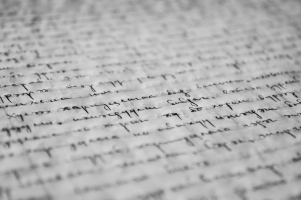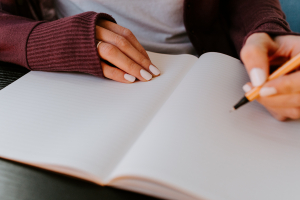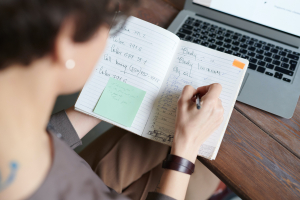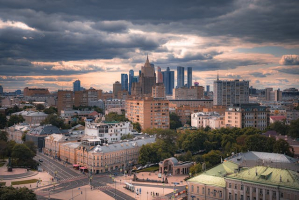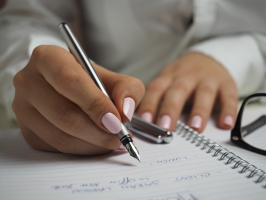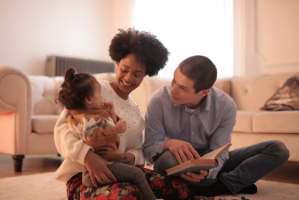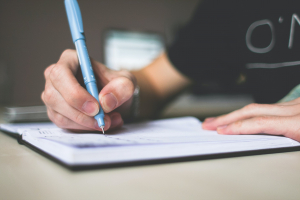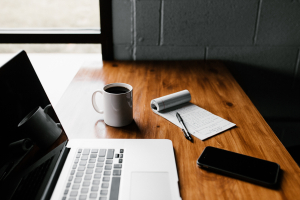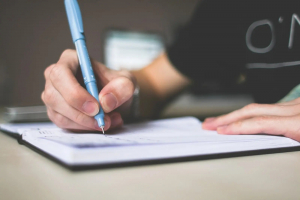Top 15 Narrative Essay Outline for High School Students
Narrative essays serve as a captivating medium for high school students to express themselves, share personal experiences, and refine their storytelling ... read more...abilities. These essays not only offer a space for creativity but also provide an opportunity to connect with readers on an emotional level. To help high school students embark on their narrative writing journey, Toplist offers these effective outlines as a roadmap for crafting well-structured and engaging essays.
-
I. Introduction
A. Hook: Engage the reader with a captivating opening about the anticipation and nerves leading up to the first day at high school.
B. Background: Briefly introduce the setting and the transition from middle school to high school.
C. Thesis Statement: Introduce the main idea of the essay and provide an overview of the experiences and emotions to be explored.
II. Body
- Early Morning Jitters
A. Waking up: Describe the morning of the first day, capturing the mix of excitement and apprehension.
B. Preparation: Detail the process of getting ready, from choosing an outfit to double-checking the backpack.
C. Departure: Share the feelings and thoughts while leaving for school, highlighting the nervous energy.
- Arrival and First Impressions
A. Entrance to the School: Illustrate the moment of walking through the school gates and the initial reactions to the new environment.
B. Meeting Peers: Depict the encounters with new classmates and the immediate impressions formed.
C. Finding Classes: Describe the challenge of navigating the campus and locating the correct classrooms.
- Classroom Experiences
A. First Lesson: Discuss the atmosphere in the first class, the teacher's introduction, and the initial interactions with classmates.
B. Subject Changes: Explain the range of emotions during the different subjects, from excitement to uncertainty.
C. Lunch Break: Reflect on the experiences during lunchtime, including finding a place to sit and converse with peers.
- Reflection and Resolutions
A. Personal Growth: Analyze the transformation of emotions throughout the day, from apprehension to a sense of belonging.
B. Lessons Learned: Discuss the insights gained from this pivotal experience and how they impacted the subsequent high school journey.
C. Closing Thoughts: Conclude with reflections on the valuable lessons learned and the anticipation for what lies ahead in the high school journey.
III. Conclusion
A. Restate Thesis: Recap the main idea and the key elements explored in the essay.
B. Final Remarks: Leave the reader with a thought-provoking or inspiring closing that encapsulates the significance of the first day at high school.

unsplash.com 
unsplash.com -
I. Introduction
A. Hook: Open with a vivid description of a challenging classroom environment where the teacher's behavior sets the tone for the narrative.
B. Background: Introduce the setting and the initial impression of the teacher, setting the stage for the negative encounter.
C. Thesis Statement: Clearly state the impact of the rude teacher experience and showcase the subsequent emotional and academic repercussions.II. Body
- Initial Impressions
A. Introduction to Teacher: Describe the first interactions with the teacher, including initial expectations and hopes for the learning experience.
B. Signs of Rudeness: Highlight specific instances or behaviors that indicated the teacher's rudeness, such as dismissive attitudes, condescending remarks, or unfair treatment of students.
C. Impact on Classroom Environment: Discuss the broader impact of the teacher's demeanor on the classroom dynamics and the student's overall morale.- Rude Encounters
A. Personal Experience: Share a specific encounter or series of events that demonstrated the teacher's rude behavior towards you or other students.
B. Emotional Response: Reflect on the immediate emotional reactions to the rude encounters, such as frustration, anger, or a sense of injustice.
C. Academic Challenges: Discuss how the teacher's rudeness affected your academic performance and motivation in the classroom.- Coping Strategies
A. Seeking Support: Describe the steps taken to address the situation, including seeking support from school authorities, peers, or family members.
B. Coping Mechanisms: Explore the various coping mechanisms employed, such as maintaining a support network, focusing on alternative learning sources, or seeking mentorship.
C. Resilience and Growth: Discuss the personal growth and resilience that emerged from navigating the challenging experience with the rude teacher.- Lessons Learned
A. Reflection on Injustice: Reflect on the broader implications of unfair treatment within the educational system and the impact on students' overall well-being.
B. Advocacy for Change: Discuss the importance of speaking up against rudeness and advocating for a positive and respectful learning environment.
C. Empathy and Understanding: Explore the newfound empathy and understanding gained from the negative experience, shaping a commitment to respectful interactions.III. Conclusion
A. Restate Thesis: Recap the significance of the narrative and the lasting impact of the rude teacher experience.
B. Final Remarks: Conclude with reflections on resilience, the pursuit of positive change, and the importance of creating supportive learning environments.
unsplash.com 
unsplash.com -
I. Introduction
A. Hook: Begin with an engaging anecdote or a captivating fact about the favorite subject to draw in the reader's interest.
B. Subject Introduction: Introduce your favorite subject and your passion for it, showcasing its significance.
C. Thesis Statement: Clearly state the importance and impact of the favorite subject on personal growth and development.
II. Body
- Discovery of Passion
A. Early Experiences: Reflect on the initial encounters with the subject and how its appeal was discovered.
B. Inspirational Influence: Discuss the individuals, such as teachers or mentors, who played a role in igniting the passion for the subject.
C. Formative Learning: Highlight specific lessons or experiences that solidified the passion for the subject and made it stand out among others.
- Personal Growth
A. Academic Improvement: Discuss the impact of your favorite subject on academic performance and achievements.
B. Skill Development: Explore the skills and competencies gained through the study of the subject and their relevance in broader contexts.
C. Personal Connection: Share how the favorite subject resonates with personal interests, values, or aspirations, contributing to holistic growth.
- Real-world Application
A. Practical Relevance: Illustrate how the knowledge and skills from the favorite subject have been applied outside the classroom.
B. Problem Solving: Share specific instances where the subject's principles or concepts were used to overcome challenges or achieve goals.
C. Future Aspirations: Discuss how your favorite subject influences future career aspirations or personal ambitions.
- Subject's Impact on Perspective
A. Broadened Horizons: Describe how the favorite subject has broadened perspectives and provided a deeper understanding of the world.
B. Critical Thinking: Discuss the role of the subject in nurturing critical thinking and analytical skills.
C. Value Assertion: Reflect on the fundamental value gained from the study of the favorite subject and how it has shaped personal outlook and values.
III. Conclusion
A. Restate Thesis: Reiterate the significant impact of the favorite subject on personal growth and development.
B. Final Thoughts: Conclude with reflections on the enduring passion for the subject and the invaluable lessons learned, leaving a lasting impression.

unsplash.com 
unsplash.com -
I. Introduction
A. Hook: Start with a captivating anecdote or engaging description of the setting during this memorable lunch.
B. Setting the Scene: Provide an introduction to the school environment and the usual lunch routines, setting the stage for the special experience.
C. Thesis Statement: Clearly state the significance of the special lunch experience and its lasting impact.
II. Body
- The Usual Lunch Routine
A. Typical School Lunches: Describe the usual offerings in the school cafeteria or the common items students brought from home.
B. Daily Routine: Illustrate the regular lunchtime activities and interactions with classmates during standard lunch breaks.
C. Establishing Norms: Highlight how the typical lunch experiences set the context for the extraordinary nature of the special lunch.
- The Unexpected Treat
A. Unique Menu: Describe the special lunch menu or the unexpected addition that made this particular lunch stand out.
B. Shared Experience: Reflect on how the special lunch brought students together and fostered a sense of community or excitement. C. Impact on Mood and Atmosphere: Discuss the shift in mood and atmosphere during this memorable lunch, capturing the collective joy or surprise.
- Personal Connection
A. Emotional Response: Share personal emotions and reactions to the special lunch experience, delving into the feelings of delight, nostalgia, or gratitude.
B. Shared Moments: Highlight interactions or shared moments with peers or staff that made the lunch experience even more special.
C. Meaningful Memories: Reflect on the enduring significance of the special lunch and the memories that have endured over time.
- Reflection and Impact
A. Lasting Impression: Discuss how the special lunch experience has left a lasting impression on your school memories and overall perspective.
B. Nostalgic Reminiscence: Reflect on the special lunch as a source of nostalgia or a reminder of simpler and joyful times.
C. Broader Significance: Explore the broader significance of this seemingly simple experience and its ability to evoke profound emotions and connections.
III. Conclusion
A. Restate Thesis: Summarize the enduring impact and significance of the most special lunch experience in school.
B. Final Thoughts: Conclude with reflections on the lasting value of seemingly trivial yet deeply meaningful experiences, leaving a lasting impression.

unsplash.com 
unsplash.com -
I. Introduction
A. Hook: Open with a captivating anecdote or description of the anticipation and excitement leading up to the farewell party.
B. Background: Provide an overview of the occasion for the farewell party and its significance in the context of the individuals involved.
C. Thesis Statement: Introduce the main idea of the essay and the unique elements that made this farewell party truly memorable.
II. Body
- Preparations and Anticipation
A. Planning Stage: Describe the initial stages of planning the farewell party, including the coordination and decision-making process.
B. Excitement and Expectations: Illustrate the sense of anticipation and the expectations leading up to the event, capturing the emotions of both the organizers and the guests.
C. Personal Involvement: Reflect on personal contributions to the preparations and the emotions experienced during this stage.
- Unforgettable Moments
A. Heartfelt Speeches: Discuss the impact of heartfelt speeches or messages exchanged during the farewell party, highlighting the emotional resonance with the audience.
B. Shared Laughter and Tears: Describe the moments of shared laughter and emotional sentiment that made the event deeply memorable.
C. Meaningful Gestures: Highlight specific gestures or actions that left a lasting impression on the attendees, fostering a strong sense of connection.
- Commemorative Activities
A. Commemoration Rituals: Discuss any unique or traditional activities incorporated into the farewell party that added meaningful significance to the event.
B. Personalized Touches: Highlight the personalized elements or surprises that made the event feel tailored to the individuals being honored.
C. Group Bonding: Explore the sense of unity and camaraderie that emerged through the shared experiences and activities during the farewell party.
- Impact and Reflection
A. Lasting Impressions: Discuss the enduring impact of the farewell party on personal memories and relationships, emphasizing the significance of the event over time.
B. Reflective Insights: Share personal reflections on the lessons learned and the deeper understanding gained from the experience of hosting or attending the memorable farewell party.
C. Expressing Gratitude: Acknowledge the importance of expressing gratitude to the individuals who made the event memorable and the role they played in creating a lasting memory.
III. Conclusion
A. Restate Thesis: Recap the main idea and the unique elements that made the farewell party a truly memorable experience.
B. Final Thoughts: Conclude with reflections on the enduring significance of the farewell party and its impact on personal growth and relationships, leaving a lasting impression.

unsplash.com 
unsplash.com -
I. Introduction
A. Setting the Stage: Describe the anticipation and buzz leading up to the welcome party, capturing the excitement and expectations of the students.
B. Background: Provide context about the significance of the welcome party in the high school culture, emphasizing its role in fostering a sense of community and belonging.
C. Thesis Statement: Introduce the main idea of the essay, highlighting the unique and remarkable aspects of the welcome party that made it truly extraordinary.
II. Body
- Preparations and Build-Up
A. Organizing Committee: Discuss the efforts of the students or faculty involved in planning and executing the welcome party, underscoring the dedication and creativity poured into the preparations.
B. Promotion and Hype: Explore how the event was publicized and the buildup of anticipation among the students and staff, emphasizing the widespread excitement.
C. Personal Involvement: Share personal experiences and contributions in the lead-up to the welcome party, highlighting individual connections to the event.
- Unforgettable Moments
A. Grand Entrance: Describe the grandeur of the event's commencement, capturing the attention-grabbing elements that immediately set the tone for an extraordinary experience.
B. Engaging Activities: Highlight the range of interactive and engaging activities that took place during the welcome party, showcasing the diversity and inclusivity of the event.
C. Remarkable Performances: Discuss standout performances or presentations that left a lasting impression on the attendees, underscoring the talent and enthusiasm on display.
- Connections and Bonds
A. Social Interactions: Explore the social dynamics and interactions among students and staff during the welcome party, showcasing the uniting power of the event.
B. New Friendships: Share personal experiences of forming new bonds and connections with peers during the festivities, emphasizing the inclusive and welcoming atmosphere.
C. Strengthening Community: Discuss the impact of the welcome party in fostering a strong sense of community and camaraderie, touching on the lasting effects in the school environment.
- Reflection and Resonance
A. Lasting Impressions: Reflect on the enduring impact of the welcome party, discussing the memories, emotions, and newfound perspectives that have lingered over time
B. Personal Connections: Share anecdotes or insights about personal growth and connections that stemmed from the experiences during the welcome party, highlighting their significance.
C. Communal Impact: Explore the broader influence of the welcome party in shaping school culture and student relationships, underlining its lasting resonance.
III. Conclusion
A. Restate Thesis: Recap the main idea and the exceptional aspects that made the welcome party an unforgettable experience.
B. Final Remarks: Conclude with reflections on the enduring significance of the welcome party and its profound impact on fostering connections and a strong sense of community in high school.

unsplash.com 
unsplash.com -
I. Introduction
A. Introduction of the Teacher: Introduce the favorite teacher, including their name, the subject taught, and the impact they had on the writer.
B. Personal Connection: Share the initial impression and the reasons the teacher became a favorite, setting the stage for the subsequent narrative.
C. Thesis Statement: Clearly state the influence and significance of the favorite teacher in shaping personal growth and academic development.
II. Body
- The Teacher's Teaching Style A. Engaging Methods
Describe the teacher's unique and effective teaching methods, explaining how they made the subject matter particularly captivating.
B. Interactive Learning: Highlight instances of interactive and hands-on activities facilitated by the teacher, underscoring their dedication to fostering a dynamic learning environment.
C. Inspirational Contributions: Discuss specific examples of how the teacher's approach positively impacted the writer's engagement with the subject.
- Personal Mentorship and Support
A. Encouraging Guidance: Reflect on the teacher's role as a mentor, illustrating how they provided valuable guidance and support beyond the classroom.
B. Individualized Attention: Share experiences of the teacher going above and beyond to provide personalized assistance or advice, demonstrating their commitment to the writer's success.
C. Nurturing Growth: Discuss the teacher's role in fostering personal and academic growth, citing specific instances of encouragement and mentorship.
- Impact on Academic Success
A. Improved Performance: Reflect on the effect of the teacher's mentorship and guidance on the writer's academic performance and achievements.
B. Development of Skills: Discuss the specific skills and competencies gained through the teacher's instruction and support, showcasing their role in the writer's growth.
C. Lasting Influence: Highlight the enduring impact of the teacher's influence on the writer's academic endeavors and their trajectory beyond high school.
- Inspirational Influence
A. Role Model: Share reflections on the teacher's role as a positive role model, discussing their impact on character development and personal values.
B. Life Lessons: Illustrate the enduring lessons and values imparted by the teacher, demonstrating their influence beyond the academic realm.
C. Gratitude and Appreciation: Express deep appreciation for the teacher's contributions and the lasting impact they have had on the writer's life.
III. Conclusion
A. Restate Thesis: Recap the profound influence and significance of the favorite teacher in shaping personal and academic development.
B. Final Reflections: Conclude with personal reflections on the enduring impact of the teacher's mentorship and influence, expressing gratitude and acknowledging their lasting influence.

unsplash.com 
unsplash.com -
I. Introduction
A. Setting the Scene: Describe the high school environment and the initial observations that drew attention to this particular friendship.
B. Definition of Perfect Friendship: Establish the criteria for what constitutes a perfect friendship and the impact it can have on individuals.
C. Thesis Statement: Introduce the main idea of the essay, emphasizing the exemplary nature of the friendship witnessed and its significance.
II. Body
- Unlikely Beginnings
A. Initial Encounters: Describe the first interactions between the friends, highlighting any notable circumstances that led to the formation of their bond.
B. Shared Interests: Explore the commonalities and interests that brought the friends together, showcasing the genuine connection and understanding from the start.
C. Overcoming Differences: Discuss any initial hurdles or differences the friends may have encountered and how they navigated through them.
- Nurturing the Friendship
A. Unwavering Support: Illustrate instances where the friends supported each other during challenging times, demonstrating the strength of their bond.
B. Mutual Growth: Discuss how the friendship contributed to the personal growth and development of each individual, emphasizing the positive influence of their connection.
C. Shared Experiences: Highlight memorable experiences, achievements, and milestones that the friends shared, solidifying their bond.
- Resilience and Loyalty
A. Testing Times: Describe how the friends supported each other during difficult periods, showcasing the resilience and loyalty that defined their friendship.
B. Unbreakable Bond: Discuss specific moments that exemplified the unshakeable nature of their bond, emphasizing their unwavering trust and commitment to each other.
C. Lessons Learned: Reflect on the profound lessons and values instilled by witnessing such a steadfast and enduring friendship.
- Impact and Influence
A. Positive Influence: Explore the impact of this friendship on the wider school community, highlighting how it inspired and influenced others.
B. Personal Reflections: Share personal reflections on the impact of witnessing this friendship, discussing the ways it affected perceptions of friendship and relationships.
C. Lasting Resonance: Discuss the enduring influence of this friendship on the writer's own life, emphasizing the lessons learned and the value of genuine connections.
III. Conclusion
A. Restate Thesis: Recap the exceptional nature of the friendship witnessed and its enduring impact.
B. Final Reflections: Conclude with reflections on the profound influence of the perfect friendship witnessed at high school, emphasizing the lasting resonance and significance of authentic connections.

unsplash.com 
unsplash.com -
I. Introduction
A. Opening Hook: Begin with a compelling anecdote or reflection that leads to the worst mistake made, capturing the reader's attention.
B. Definition of Mistake: Provide a brief definition of what constitutes a mistake and its potential impact on one's life.
C. Thesis Statement: Introduce the focal point of the essay, outlining the specific mistake made and its implications.
II. Body
- Context of the Mistake
A. Background Setting: Describe the circumstances leading up to the mistake, including time, place, and the underlying factors that influenced the decision.
B. Decision-Making Process: Explore the thought process and emotions involved in making the mistake, shedding light on the factors that contributed to the choice.
C. Initial Impact: Reflect on the immediate consequences of the mistake, setting the stage for its subsequent effects.
- Unfolding Consequences
A. Personal Effects: Discuss the direct impact of the mistake on oneself, including emotional, psychological, or physical repercussions.
B. Interpersonal Fallout: Explore how the mistake affected relationships with others, emphasizing any tensions or difficulties that arose as a result.
C. External Ramifications: Examine how the mistake impacted external aspects of life, such as academics, career, or personal goals.
- Learning and Growth
A. Reflection on Mistake: Discuss the process of introspection and realization regarding the gravity of the mistake, acknowledging the lessons learned.
B. Acceptance and Responsibility: Illustrate personal accountability and acceptance of the mistake, highlighting the steps taken to rectify the situation.
C. Personal Growth: Examine the transformation and growth experienced as a result of overcoming the mistake, emphasizing the valuable insights gained.
- Impact on Future Choices
A. Changed Perspectives: Share reflections on how the mistake altered perceptions and decision-making processes, potentially leading to wiser choices.
B. Preventative Measures: Discuss the proactive steps taken to avoid similar mistakes in the future, underscoring the newfound awareness and caution.
C. Influence on Personal Development: Reflect on the lasting impact of the mistake in shaping personal values, goals, and future aspirations.
III. Conclusion
A. Restate Thesis: Recap the essence of the worst mistake made and its profound impact.
B. Final Remarks: Conclude with reflections on the enduring lessons and growth stemming from the mistake, emphasizing personal development and resilience.
unsplash.com 
unsplash.com -
I. Introduction
A. Hook: Engage the reader with a captivating opening about the significance of decision-making and the impact of choices in high school.
B. Background: Briefly introduce the setting and the context of being a high school student, highlighting the various challenges and opportunities.
C. Thesis Statement: Introduce the main idea of the essay, emphasizing the pivotal nature of the best decision made and its implications.
II. Body
- Identification of the Decision
A. Setting the Stage: Describe the circumstances and factors that led to the pivotal decision, providing insight into the context and motivations.
B. Decision-Making Process: Discuss the thought process and considerations involved in making the decision, highlighting the deliberations and potential uncertainties.
C. Justification: Explain why the decision stood out as the best choice and its potential impact on personal growth and development.
- Implementation and Immediate Effects
A. Action Taken: Describe the steps and actions involved in implementing the decision, showcasing the commitment and resolve to follow through.
B. Initial Challenges: Illustrate any hurdles or obstacles faced in the initial stages of implementing the decision, emphasizing perseverance and resilience.
C. Early Rewards: Highlight the immediate positive effects or outcomes of the decision, showcasing the initial benefits and rewards reaped.
- Transformation and Growth
A. Personal Development: Discuss how the decision contributed to personal growth, maturity, and self-discovery, emphasizing the transformative impact.
B. Acquisition of Skills: Explore the skills, knowledge, or experiences gained as a result of the decision, showcasing the breadth of growth and development.
C. Overcoming Adversity: Reflect on the challenges encountered and how the decision enabled resilience and the capacity to overcome obstacles.
- Sustained Impact and Future Outlook
A. Long-Term Effects: Examine the enduring impact of the decision on personal goals, aspirations, and overall high school experience.
B. Lessons Learned: Discuss the valuable lessons and insights gained from making and adhering to the decision, highlighting the broader implications.
C. Influence on Future Choices: Reflect on how the decision influenced subsequent choices and outcomes, emphasizing its role in shaping future endeavors.
III. Conclusion
A. Restate Thesis: Recap the main idea and the significance of the best decision made as a high school student.
B. Final Reflections: Conclude with reflections on the profound impact of the decision, emphasizing personal growth, resilience, and the enduring influence on future endeavors.

unsplash.com 
unsplash.com -
I. Introduction
A. Hook: Engage the reader by describing a vivid and enticing memory of the first encounter with the best street food.
B. Background: Provide a brief introduction to the high school environment and the allure of street food during that time.
C. Thesis Statement: Introduce the main idea of the essay, emphasizing the significance of the best street food experience and its lasting impact.
II. Body
- Discovery of the Street Food
A. Setting the Scene: Describe the circumstances and setting where the discovery of the best street food took place, highlighting the atmosphere and surroundings.
B. Initial Impression: Share the first impression of the street food, including the sensory experience and any preconceptions or expectations.
C. Culinary Exploration: Discuss the curiosity and adventurous spirit that motivated the decision to try the street food, capturing the sense of discovery and excitement.
- Immersive Experience
A. Taste and Aromas: Delve into the flavors, textures, and aromas of the street food, articulating the delectable qualities that make it memorable.
B. Cultural Context: Explore the cultural significance of the street food and its connection to the local community, highlighting its authenticity and traditional roots.
C. Shared Moments: Reflect on any shared experiences or interactions with friends or locals while enjoying the street food, capturing the communal aspect of culinary exploration.
- Impact and Significance
A. Personal Connection: Share personal emotions and reactions to the street food experience, delving into the feelings of delight, nostalgia, or excitement.
B. Lasting Impression: Discuss the enduring impact of the street food experience on personal culinary preferences and adventurous spirit.
C. Broader Significance: Explore the broader significance of this seemingly simple experience in shaping cultural appreciation and openness to diverse culinary traditions.
- Reflection and Nostalgia
A. Nostalgic Reminiscence: Reflect on the street food experience as a source of nostalgia and fond memories, underscoring its enduring impact on high school days.
B. Cultural Appreciation: Discuss the role of the street food experience in fostering an appreciation for diverse cuisines and cultural traditions.
C. Culinary Exploration: Emphasize the value of culinary exploration and the role of the best street food experience in broadening culinary horizons.
III. ConclusionA. Restate Thesis: Summarize the enduring impact and significance of the best street food experience during high school days.
B. Final Thoughts: Conclude with reflections on the lasting value of seemingly simple yet profound experiences, leaving a lasting impression and shaping cultural appreciation.

unsplash.com 
unsplash.com -
I. Introduction
A. Hook: Engage the reader by presenting a captivating real-life scenario or event that epitomizes the best thing learned in high school.
B. Background: Set the context by introducing the significance of high school education and the potential for profound learning experiences.
C. Thesis Statement: Introduce the main idea of the essay, highlighting the powerful impact of the best lesson learned in high school.II. Body
- Identification of the Lesson
A. Setting the Stage: Describe the circumstances or subject matter through which the best learning experience was gained, providing insight into its relevance and impact.
B. Initial Reactions: Share the initial perceptions or feelings toward the subject or experience from which the lesson was learned, setting the stage for personal growth or transformation.
C. The Lesson Unfolds: Illustrate the process of acquiring the lesson through personal experiences, interactions, or revelations, emphasizing its significance.- Key Learnings and Realizations
A. Core Concepts: Delve into the key principles or ideas encapsulated in the best lesson, explaining their depth and relevance to personal growth.
B. Personal Transformation: Discuss how the lesson facilitated personal growth, resilience, or a shift in perspective, demonstrating its impact on character development.
C. Impact on Decision Making: Explore how the best lesson influenced subsequent decisions or actions, showcasing its practical relevance and enduring influence.- Application and Reflection
A. Application in High School: Highlight instances or examples of how the lesson was practically applied during high school, illustrating its relevance in various contexts.
B. Influences Beyond High School: Discuss how the lessons learned transcended high school and influenced decisions or attitudes in subsequent endeavors, underscoring its enduring influence.
C. Recurring Themes: Reflect on the enduring relevance of the best lesson in shaping values, attitudes, or aspirations across different stages of life.- Personal Growth and Development
A. Maturity and Resilience: Discuss how the best lesson contributed to personal maturity, resilience, and adaptability, showcasing its role in fostering life skills.
B. Empowerment and Confidence: Share how the lesson empowered and instilled confidence in facing challenges or pursuing opportunities, underscoring its transformative impact.
C. Broadened Perspectives: Reflect on how the lesson broadened perspectives, fostered empathy, or deepened understanding of self and others.III. Conclusion
A. Restate Thesis: Summarize the profound impact and significance of the best thing learned in high school.
B. Final Remarks: Conclude with reflections on the enduring value of the best lesson, emphasizing personal growth, resilience, and its enduring influence beyond the high school years.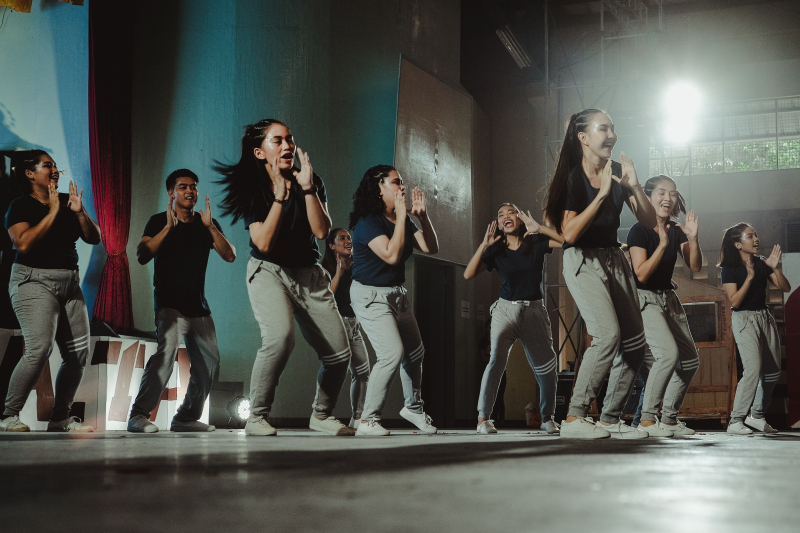
unsplash.com 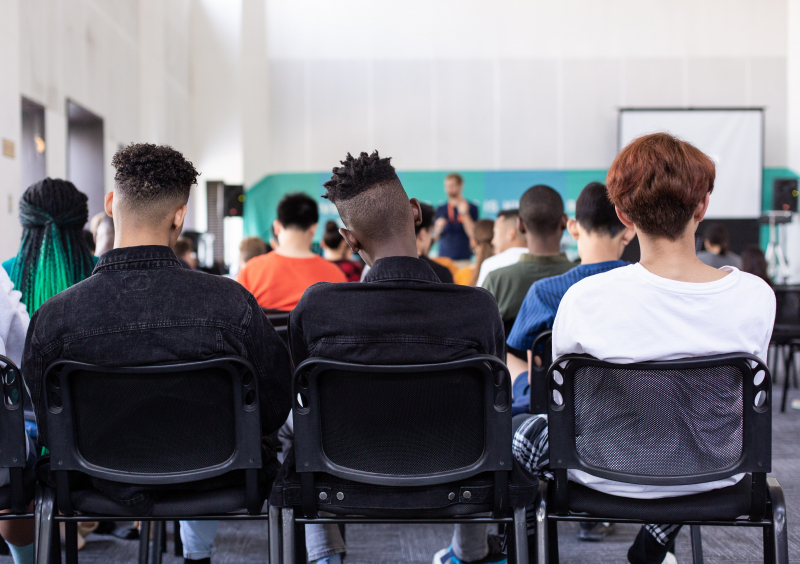
unsplash.com -
I. Introduction
A. Hook: Begin with an anecdote or experience that introduces the exceptional qualities of the best classmate.
B. Background: Provide a brief introduction to the high school environment and the role of classmates in shaping the overall experience.
C. Thesis Statement: Introduce the main idea of the essay, emphasizing the unique impact and significance of the best classmate in high school.II. Body
- Initial Encounters
A. First Impressions: Share initial impressions of the best classmate, highlighting memorable and distinctive qualities that stood out.
B. Shared Interests: Discuss any common interests or activities that facilitated the initial connection with the best classmate, setting the stage for a strong bond.
C. Forming a Friendship: Describe the process of building a friendship and the moments that solidified the bond with the best classmate.- Support and Encouragement
A. Mutual Support: Illustrate instances where the best classmate provided unwavering support and encouragement, highlighting the impact on personal growth and well-being.
B. Academic Collaboration: Discuss collaborative efforts on academic endeavors or projects, showcasing the influence of the best classmate on academic pursuits.
C. Emotional Resilience: Explore how the best classmate contributed to emotional resilience and served as a pillar of support during challenging times.- Shared Memories and Experiences
A. Memorable Moments: Share specific experiences or memories shared with the best classmate, underscoring the depth of the bond and the joy derived from shared experiences.
B. Milestones and Achievements: Highlight collaborative achievements or milestones, demonstrating the positive impact of the best classmate on personal and collective accomplishments.
C. Impact on Social Circle: Discuss the influence of the best classmate on the wider social circle, emphasizing the positive dynamics and camaraderie fostered.- Lasting Influence
A. Enduring Friendship: Reflect on the enduring nature of the friendship with the best classmate beyond high school, showcasing its lasting impact.
B. Lessons Learned: Discuss the valuable lessons and personal growth facilitated by the presence of the best classmate, underscoring their enduring influence.
C. Reciprocal Impact: Explore how the relationship with the best classmate influenced personal values, attitudes, and aspirations, highlighting the reciprocal nature of the bond.III. Conclusion
A. Restate Thesis: Summarize the profound impact and significance of the best classmate in high school.
B. Final Reflections: Conclude with reflections on the enduring value of the best classmate, emphasizing the lessons learned, the enduring impact, and the enduring nature of the friendship.
unsplash.com 
unsplash.com -
I. Introduction
A. Hook: Begin with a relatable anecdote or experience that highlights the struggles of enduring boring subjects and lectures.
B. Definition/Description: Provide a brief explanation of what makes a subject or lecture boring, setting the stage for the discussion that follows.
C. Thesis Statement: Introduce the main idea of the essay, emphasizing the impact of boring subjects and lectures on student engagement and academic experience.
II. Body
- Identification of Boring Subjects
A. Subject A: Identify and describe the characteristics of the first boring subject, including the specific aspects of its lectures that contribute to the boredom.
B. Subject B: Introduce another boring subject, highlighting its key features and the monotonous elements of its lectures.
C. Personal Experiences: Share personal experiences and reactions to the boredom experienced in these subjects and lectures, providing context for the significance of the discussion.
- Factors Contributing to Boredom
A. Teaching Methods: Discuss how the teaching methods and delivery of the lectures in these subjects contributed to the sense of boredom, including monotonous presentation styles or lack of interactive elements.
B. Relevance to Personal Interests: Explore the disconnect between the subject matter and personal interests, emphasizing the impact of disinterest on engagement.
C. Lack of Engagement: Highlight instances of low student engagement and participation in lectures, underscoring the consequences of boredom on learning outcomes.
- Effects on Academic Performance and Attitude
A. Impact on Learning: Discuss how the boredom from these subjects and lectures affected academic performance and retention of information, providing examples or personal instances.
B. Psychological Impact: Explore the emotional and psychological toll of enduring repetitive and uninteresting content during lectures, showcasing its impact on motivation and attitude toward learning.
C. Coping Mechanisms: Share strategies or coping mechanisms employed to mitigate the effects of boring subjects and lectures, demonstrating the resilience and adaptive strategies of students.
- Seeking Engagement and Solutions
A. Student Initiatives: Highlight instances of students seeking engagement within the context of boring subjects, such as forming study groups or seeking out alternative learning resources.
B. Suggestions for Improvement: Discuss potential solutions or changes that could improve the engagement and interest in these subjects and lectures, emphasizing the importance of promoting dynamic and interactive learning experiences.
C. Impact and Change: Reflect on the potential impact of implementing changes to mitigate the boredom associated with these subjects and lectures, promoting a more engaging and enriching academic environment.
III. Conclusion
A. Restate Thesis: Summarize the impact of boring subjects and lectures on student engagement and academic experience.
B. Final Thoughts: Conclude with reflections on the enduring influence of boring subjects, emphasizing the importance of fostering engaging and stimulating learning environments to enhance student experiences and academic outcomes.

unsplash.com 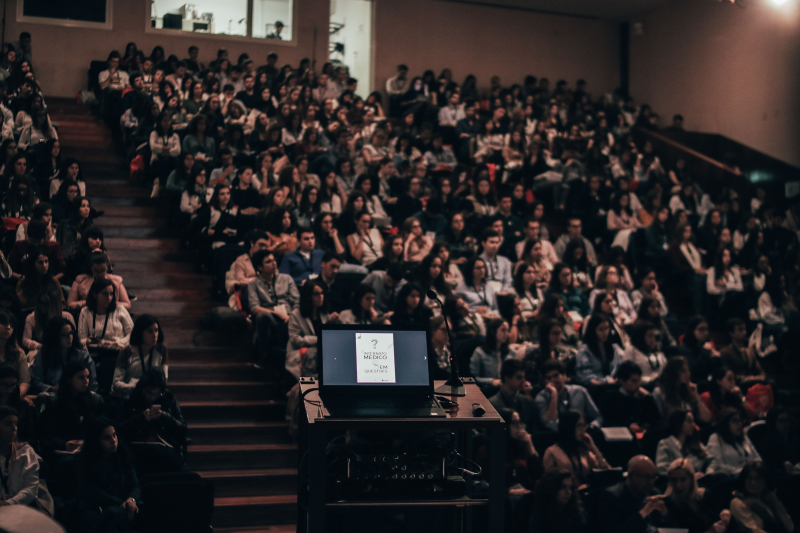
unsplash.com -
I. Introduction
A. Introduction to Boredom: Introduce the concept of boredom in the context of high school, setting the stage for the narrative.
B. Personal Experience: Share an anecdote or experience that encapsulates the monotony and tedium of an extremely boring day in high school.
C. Thesis Statement: Articulate the main idea of the essay, highlighting the impact of boredom on the high school experience.
- Morning Monotony
A. Waking Up: Describe the morning routine, emphasizing the lack of excitement or anticipation for the day ahead.
B. Journey to School: Depict the uneventful commute to school, underscoring the mundane nature of the surroundings and the absence of engagement.
C. Assembly or Homeroom: Detail the lackluster atmosphere during the initial school gathering, highlighting the dullness of the start of the day.
- Tedious Classes and Lectures
A. Subject A: Describe the first boring subject and its associated lecture, highlighting the repetitive or unstimulating content.
B. Subject B: Introduce another tedious class, outlining the monotony of the lecture and the impact on student engagement.
C. Lack of Engagement: Discuss the general lack of student engagement and participation, emphasizing the pervasive nature of boredom throughout the day.
- Lunchtime Lull
A. Uninspiring Break: Illustrate the lack of excitement or variation during the lunch break, showcasing the continuation of boredom into the midday period.
B. Social Dynamics: Discuss the impact of boredom on social interactions, including the subdued nature of conversations and activities among peers.
C. Psychological Impact: Explore the emotional and psychological toll of enduring an extremely boring day, highlighting the mental fatigue and disengagement experienced.
- Afternoon Drudgery
A. Continuing Classes: Discuss the continuation of uninspiring classes and lectures throughout the afternoon, emphasizing the endurance of tedium.
B. Personal Coping: Share personal reactions and coping mechanisms employed to navigate the monotony, providing insights into the strategies adopted to manage the day.
C. Impact on Motivation: Reflect on the impact of enduring an extremely boring day on motivation, highlighting the potential long-term implications on academic performance and well-being.
- Reflection and Lessons Learned
A. Personal Growth: Explore the lessons and insights gained from the experience of enduring an extremely boring day, highlighting the resilience and adaptability fostered.
B. Seeking Solutions: Discuss potential strategies or changes that could mitigate the prevalence of boredom in high school, underscoring the importance of fostering engaging and dynamic learning environments.
C. Closing Thoughts: Reflect on the enduring impact of such a day and the value of overcoming challenges, concluding with insights into personal growth and the broader implications for the educational experience.
III. Conclusion
A. Restate Thesis: Summarize the impact of enduring an extremely boring day in high school on student engagement and well-being.
B. Final Reflections: Conclude with reflections on the profound influence of boredom, emphasizing the importance of promoting dynamic and stimulating educational experiences to enhance student engagement and academic outcomes.

unsplash.com 
unsplash.com























